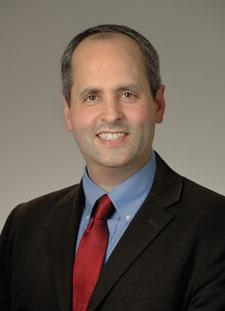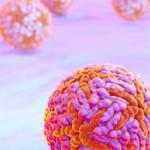
Jon Lorsch, Ph.D.
Senior Investigator
Laboratory on the Mechanism and Regulation of Protein Synthesis
NICHD/DIR
Director
NIGMS
Research Topics
The Molecular Mechanics of Eukaryotic Translation Initiation
The goal of our research group is to elucidate the molecular mechanisms underlying the initiation phase of protein synthesis in eukaryotic organisms. We use the yeast Saccharomyces cerevisiae as a model system and employ a range of approaches—from genetics to biochemistry to structural biology—in collaboration with Alan Hinnebusch's and Tom Dever’s labs here at NICHD and several other research groups around the world.
Eukaryotic translation initiation is a key control point in the regulation of gene expression. It begins when an initiator methionyl tRNA (Met-tRNAi) is loaded onto the small (40S) ribosomal subunit. Met-tRNAi binds to the 40S subunit as a ternary complex (TC) with the GTP–bound form of the initiation factor eIF2. Three other factors, eIF1, eIF1A, and eIF3, also bind to the 40S subunit and promote the loading of the TC. The resulting 43S pre-initiation complex (PIC) is then loaded onto the 5'-end of an mRNA with the aid of eIF3 and the eIF4 group of factors: the RNA helicase eIF4A; the 5'-7-methylguanosine cap-binding protein eIF4E; the scaffolding protein eIF4G; and the 40S subunit– and RNA–binding protein eIF4B. Both eIF4A and eIF4E bind to eIF4G and form the eIF4F complex. Once loaded onto the mRNA, the 43S PIC is thought to scan the mRNA in search of an AUG start codon. The process is ATP–dependent and likely requires multiple RNA helicases, including the DEAD–box protein Ded1p. Recognition of the start site begins with base pairing between the anticodon of tRNAi and the AUG codon. Base pairing then triggers downstream events that commit the PIC to continuing initiation from that point on the mRNA. These events include ejection of eIF1 from its binding site on the 40S subunit, movement of the C-terminal tail (CTT) of eIF1A, and release of phosphate from eIF2, which converts eIF2 to its GDP–bound state. In addition, the initiator tRNA moves from a position that is not fully engaged in the ribosomal P site [termed P(OUT)] to one that is [P(IN)], and the PIC as a whole converts from an open conformation that is conducive to scanning to a closed one that is not. At this stage, eIF2•GDP dissociates from the PIC, and eIF1A and a second GTPase factor, eIF5B, coordinate joining of the large ribosomal subunit to form the 80S initiation complex. In a process that appears to result in conformational reorganization of the complex, eIF5B hydrolyzes GTP and then dissociates along with eIF1A.
Biography
Jon R. Lorsch, Ph.D., became the director of the National Institute of General Medical Sciences (NIGMS) in August 2013.
In this position, Lorsch oversees the Institute's $3 billion budget, which supports basic research that increases understanding of biological processes and lays the foundation for advances in disease diagnosis, treatment and prevention.
NIGMS supports more than 5,500 investigators and 5,000 research grants–over 11 percent of the total number of research grants funded by NIH as a whole. Additionally, NIGMS supports approximately 30 percent of the NRSA trainees who receive assistance from NIH.
Lorsch came to NIGMS from the Johns Hopkins University School of Medicine, where he was a professor in the Department of Biophysics and Biophysical Chemistry. He joined the Johns Hopkins faculty in 1999 and became a full professor in 2009.
A leader in RNA biology, Lorsch studies the initiation of translation, a major step in controlling how genes are expressed. When this process goes awry, viral infection, neurodegenerative diseases and cancer can result. To dissect the mechanics of translation initiation, Lorsch and collaborators developed a yeast-based system and a wide variety of biochemical and biophysical methods. The work also has led to efforts to control translation initiation through chemical reagents, such as drugs. Lorsch continues this research as a tenured investigator in the NIH's Eunice Kennedy Shriver National Institute of Child Health and Human Development.
NIGMS supported Lorsch's research from 2000-2013. He also received grants from the NIH's National Institute of Diabetes and Digestive and Kidney Diseases and National Institute of Mental Health, as well as from other funding organizations.
Lorsch is as passionate about education as he is about research. During his tenure at Johns Hopkins, he worked to reform the curricula for graduate and medical education, spearheaded the development of the Center for Innovation in Graduate Biomedical Education, and launched a program offering summer research experiences to local high school students, many from groups that are underrepresented in the biomedical sciences. In addition, he advised dozens of undergraduate and graduate students and postdoctoral fellows.
Lorsch received a B.A. in chemistry from Swarthmore College in 1990 and a Ph.D. in biochemistry from Harvard University in 1995, where he worked in the laboratory of Jack Szostak, Ph.D. He conducted postdoctoral research at Stanford University in the laboratory of Daniel Herschlag, Ph.D.
Lorsch is the author of more than 70 peer-reviewed research articles, book chapters and other papers. He has also been the editor of six volumes of Methods in Enzymology and has been a reviewer for numerous scientific journals. He is the author on two awarded U.S. patents. His honors include six teaching awards from Johns Hopkins.
Selected Publications
- Zhou F, Bocetti JM, Hou M, Qin D, Hinnebusch AG, Lorsch JR. Transcriptome-wide analysis of the function of Ded1 in translation preinitiation complex assembly in a reconstituted in vitro system. Elife. 2024;13.
- Yourik P, Aitken CE, Zhou F, Gupta N, Hinnebusch AG, Lorsch JR. Yeast eIF4A enhances recruitment of mRNAs regardless of their structural complexity. Elife. 2017;6.
- Llácer JL, Hussain T, Marler L, Aitken CE, Thakur A, Lorsch JR, Hinnebusch AG, Ramakrishnan V. Conformational Differences between Open and Closed States of the Eukaryotic Translation Initiation Complex. Mol Cell. 2015;59(3):399-412.
- Gupta N, Lorsch JR, Hinnebusch AG. Yeast Ded1 promotes 48S translation pre-initiation complex assembly in an mRNA-specific and eIF4F-dependent manner. Elife. 2018;7.
- Llácer JL, Hussain T, Saini AK, Nanda JS, Kaur S, Gordiyenko Y, Kumar R, Hinnebusch AG, Lorsch JR, Ramakrishnan V. Translational initiation factor eIF5 replaces eIF1 on the 40S ribosomal subunit to promote start-codon recognition. Elife. 2018;7.
Related Scientific Focus Areas

Molecular Biology and Biochemistry
View additional Principal Investigators in Molecular Biology and Biochemistry


This page was last updated on Monday, November 18, 2024